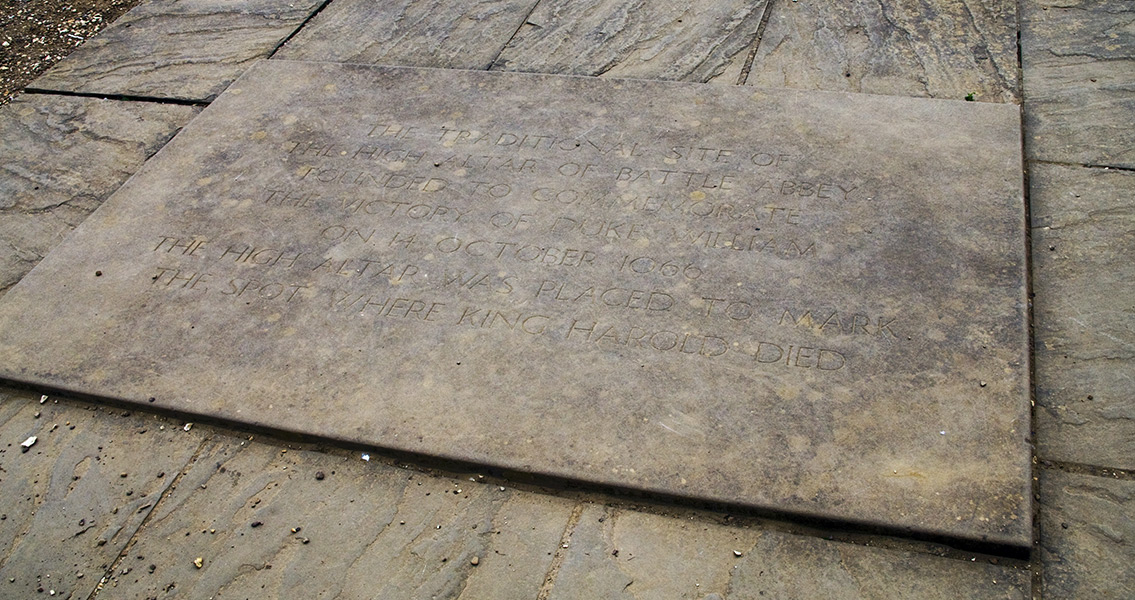<![CDATA[After it became clear that the spot where the Anglo-Saxon King Harold had been struck down at the Battle of Hastings was in actuality around 20 feet away, his memorial stone was moved to the proper place. Harold’s death in 1066 altered the course of English history. The Norman invaders, led by William the Conqueror, would now rule the island; English culture – and even the very language itself – would irrevocably change as a result. This has made the site where King Harold lost his life one of the most popular tourist destinations for history professors and amateur historians alike. However, it turns out that visitors have been standing in the wrong place this entire time. After an initiative launched by English Heritage to renovate the site, it became apparent to experts associated with the work that they had gotten the fine details wrong when it came to the layout of Battle Abbey, the church that grew up around the site after the Battle of Hastings. According to tradition, Battle Abbey’s high altar was placed at the spot where King Harold fell. While the original Norman church was demolished in 1538 and only re-discovered in 1929, it wasn’t until the 1980s that the ruins of Battle Abbey became a tourist site; at that time, historians approximated the layout of the Abbey’s church, deciding the high alter would have been in the middle. However, new research into church construction of the twelfth century revealed that the high altar of such a church would not have been placed in the center. Instead, it would have been on the line where the church, which would have had a semi-circular end, began to curve, a location known as the chord of the apse. In line with this new discovery, the memorial stone marking the site of the high altar has been repositioned to its proper location, just part of the £1.8 million major refurbishment of the site which will allow the public to view the battlefield from above. The top of Battle Abbey’s medieval gate house will be made accessible, providing a vantage point some 70 feet high for anyone with the fortitude to climb the 66 steps to the pinnacle. Additionally, the large dormitory room of the abbey, where the Benedictine monks that lived there would have slept, will be accessible for the first time by walking through the room’s original thirteenth century doorway. In an interview with The Telegraph, English Heritage’s senior properties curator Roy Porter said that the organization wanted visitors to do more than just enjoy visiting the remains of the medieval monastery. The desire for visitors to gain a better understanding of the Battle of Hastings was behind the decision to make the gatehouse roof accessible. Porter hopes that visitors will be able to look out across the battlefield and its landscape, thus gaining wider knowledge of how it sits within the local Sussex landscape. Image courtesy of Wikimedia Commons user: Ealdgyth]]>
Place of King Harold’s Death Moved 20 Feet
